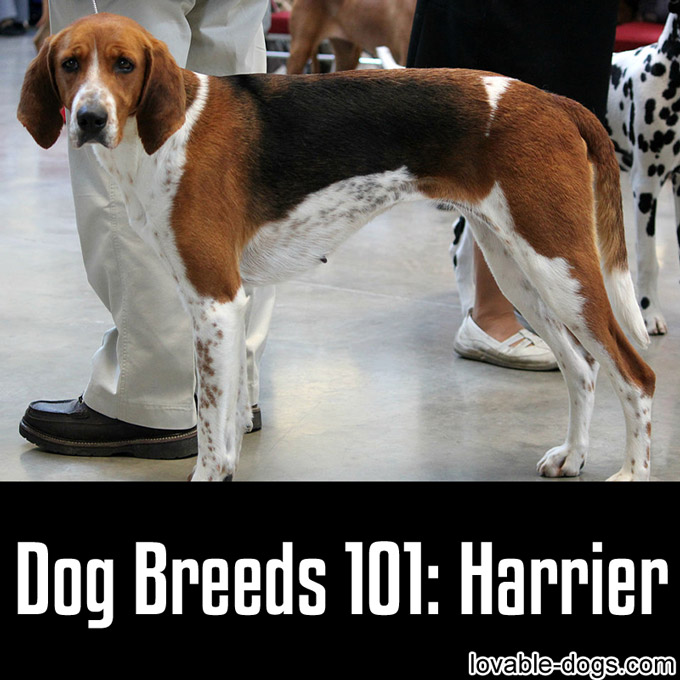
Photo – Wikipedia (PD)
The lively and active Harrier is often referred to as “Beagle on steroids” due to its strength and ability to work tirelessly for long periods. These dogs were bred as pack hunters and were mainly used to hunt hares. They are fast runners and has an excellent sense of smell – the features of the perfect hunting companion. They are very much like the English Foxhound, only smaller. Today, the Harrier is one of the rarest dog breeds registered in the American Kennel Club. [1][2]
As pets, Harriers are cheerful and good with children. However, they should always be supervised with other pets because they tend to chase anything that runs due to their ancestry. These dogs love exploring and they should always be given enough opportunities to roam around in a fenced area. Since Harriers were bred to hunt all day, they won’t do well with owners who doesn’t lead an active lifestyle. The breed’s average lifespan is 12 to 15 years. [3]
The breed’s name is derived from the Norman word “Harier” which means dog or hound. The origin of the breed is a mystery but it is widely believed that Harriers are descendants of St. Hubert and Talbot hounds and the French Basset. What is known for sure is that they were popular in England in the 18th century. A pack of Harriers called the Penistone pack was established by Sir Elias Midhope and the dogs were popular hunters during that time. They used to be much slower because they used to accompany hunters on foot but when horseback hunting became a trend, the English Foxhounds were bred with them to produce a faster and longer-legged Harrier. The breed has never been a popular one, in fact, only 949 Harriers have been registered with the American Kennel Club from 1884 to 1994. It still remains relatively unknown up to this day. [4][1]

